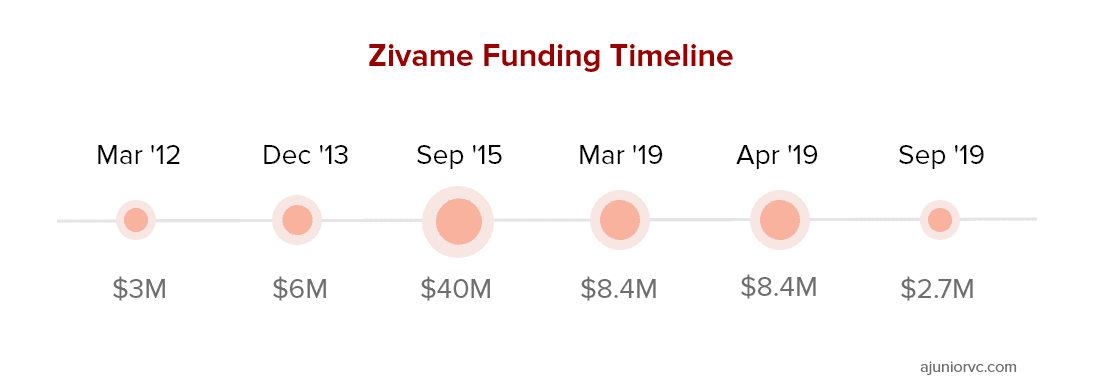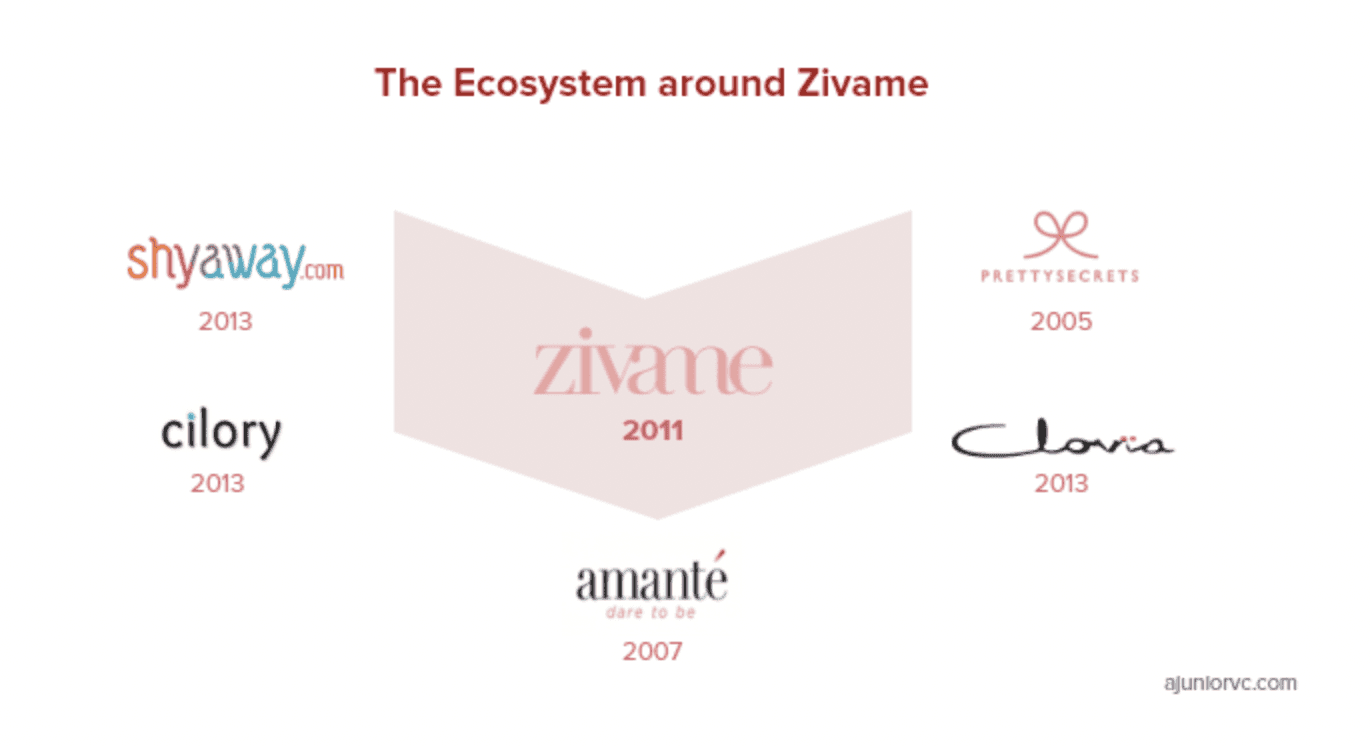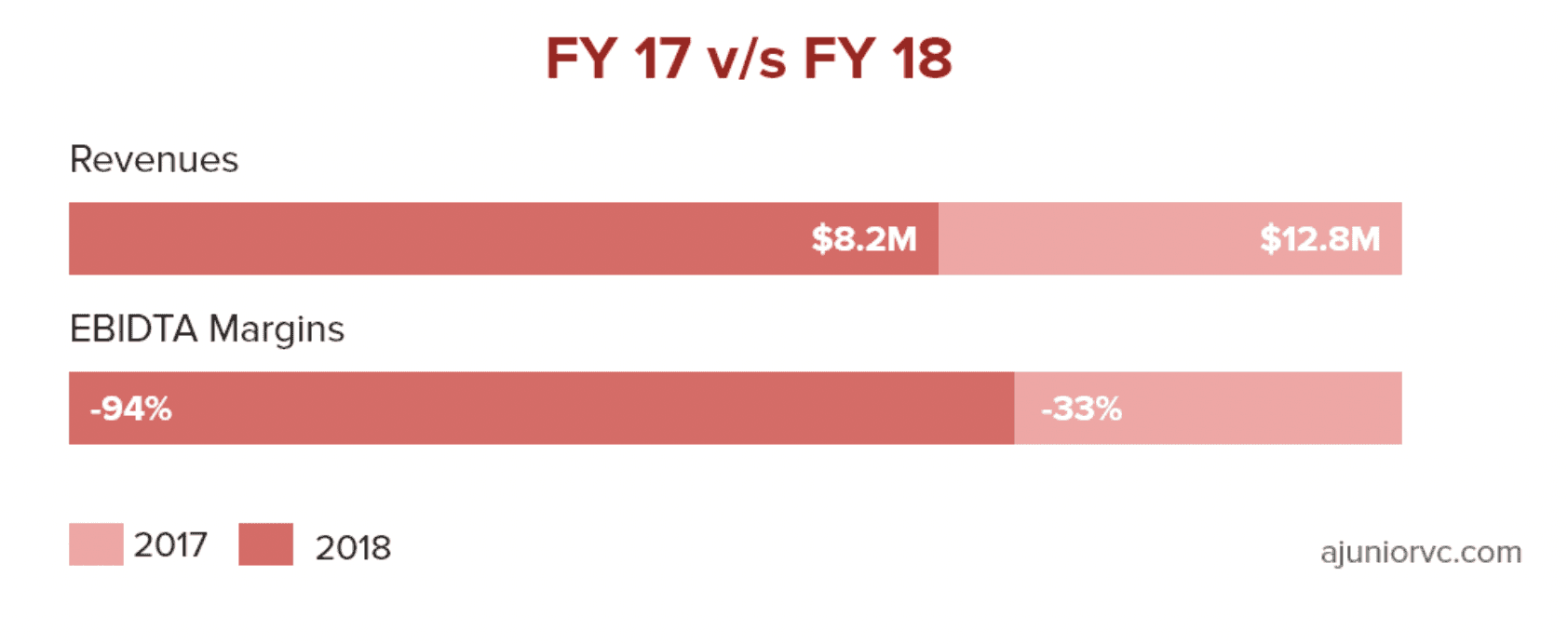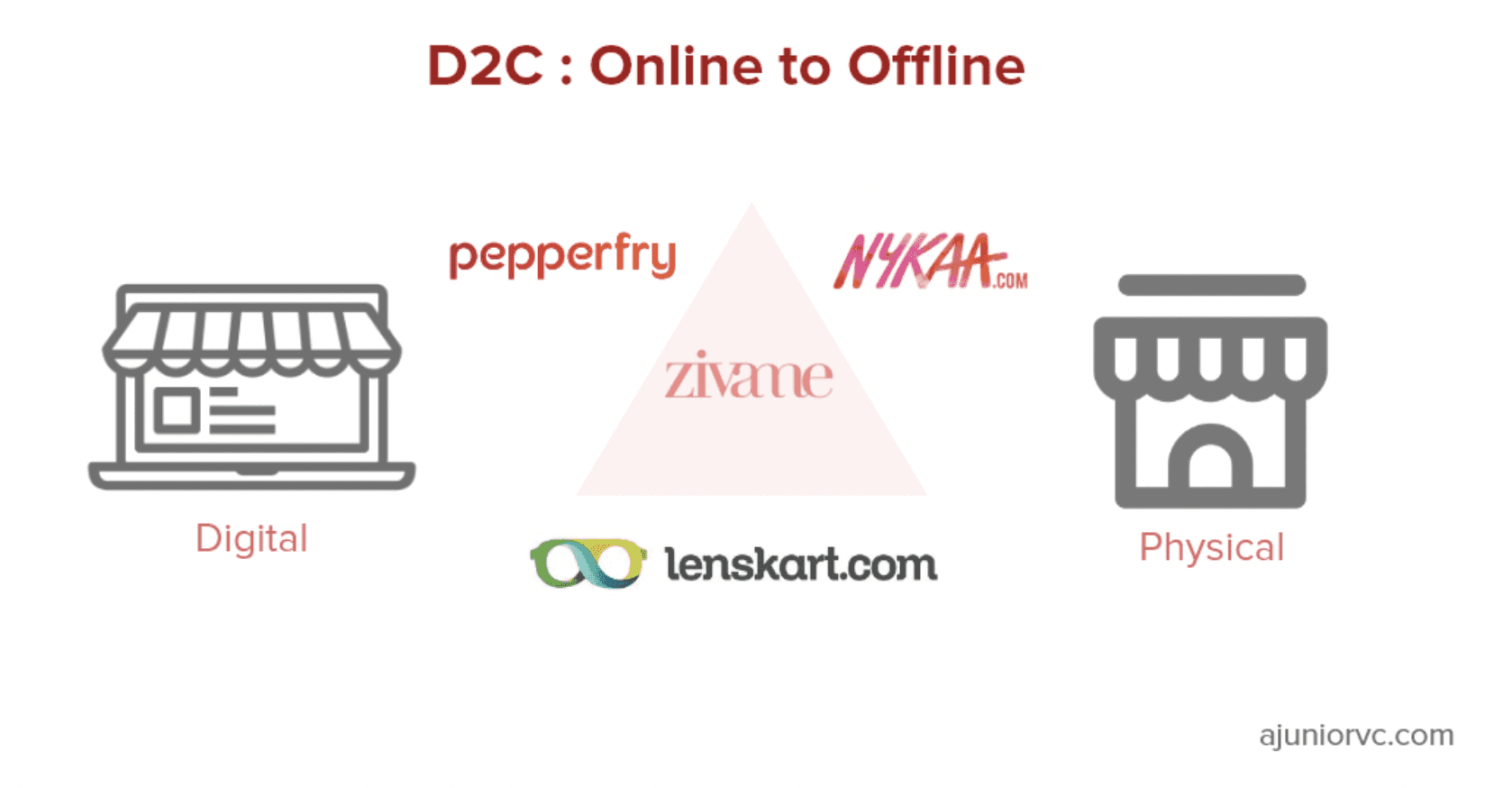Nov 3, 2019
Is Zivame the Disruptor Getting Disrupted?
Fashion
Brand
Aggregator
B2C
Series B-D
Last fortnight, Zivame raised a venture debt round as part of its $50MM financing to help get it to profitability.
What the Economy Wears
Innerwear sales are found to one of the most accurate leading indicators of the health of the economy. Really.

While the ex-US Fed Chair referred to men buying frayed innerwear as a proxy for the health of the economy, another large segment of purchasers was ignored in this rule of thumb.
A segment that accounts for 48.36% of us. Things sometimes exist in a state which becomes the norm, not because it is particularly acceptable but because we’ve stopped questioning the status quo.
Where do women get their innerwear, and more specifically their lingerie from?
From Victoria’s Secret, right? Wrong. From that picturesque La Senza showroom at that posh mall, correct? Wrong again.
From a guy at a retail store. Bizarrely, yes.
More often than not, shops that sell women’s lingerie are staffed by men. This can make for an uncomfortable experience for both the buyer and the retailer.
In a state where most women accepted it for what it was, Richa Kar found an opportunity to change the status quo.
In-visible Opportunity
During her stint with SAP Retail Consulting, Ms. Kar worked with L Brands, Inc., the company behind Victoria’s Secret, to track their sales.
She observed how lingerie sales figures were strong overseas. The Indian market was constrained because of a social stigma caused by a rather apparent, yet invisible, factor.
Ms. Kar met Kapil Karekar through a common friend, at a time when she was thinking about the concept of online retailing of lingerie in India.
And thus, in 2011, along with Mr. Karekar who had worked with companies like InMobi, ESPN, and Yahoo! for over 10 years, the duo founded an online lingerie shopping platform, Zivame.
The name Zivame was derived from the Hebrew word "ziva," which means "radiant."
Change, however, is not full of radiance and there are all sorts of challenges along the way.
The earliest came in the form of questions that were raised on Ms. Kar's family in society. With the struggle of entrepreneurship being tough in itself, there was the additional stigma of selling or talking about what, essentially, is a piece of clothing.
Ms. Kar was not to be deterred.
Armed with an engineering degree from BITS Pilani, followed by an MBA from NMIMS in 2007, she set out to do what it takes.
It is no coincidence then that her first customer was a man from Indore who bought products worth INR 7,000 in 2011.

The Zivame founders started with $600K in seed money and raised their first round of external capital $3MM in May 2012.
Revenue was projected to cross $15MM by March 2016 with about 200,000 items being shipped every month.
Zivame was off in earnest, but what was it really solving for?
Braving Private Buyin
In the world of e-commerce, where everything from lenses to houses sells online, Zivame was not a novel concept.
However, the value proposition Zivame had was much stronger than its peers in other segments.
Women in India traditionally look abroad for quality lingerie. They pay steep prices for the top 10 brands that form just 8% of this highly fragmented market.
The lion’s share of the market is claimed by a long-tail of local manufacturers who offer very limited, and often poorly designed lingerie.
Thus, most women are forced to make do with ill-fitting intimates – arguably the most important piece of clothing. Zivame sought to address this gap by providing open access to affordable and good quality lingerie.
It started off as a marketplace but soon added private labels that were based on dedicated research into body types and preferences, leading it to provide ranges in a space that had only seen limited sizes.
Recognizing the acute shortage of knowledge in this domain, it also educated its customers on finding the right size/type through its online fitting room and physical ‘experience centres’, or fitting lounges.
As an online channel, it provided women with an escape from any discomfort they might face in buying offline. Most importantly, Zivame promised to serve remote areas in tier II and III cities that had even more severe issues of quality supply.
It was no surprise then that Zivame gained rapid traction soon after its launch.
Finding Market Fit
Monthly visitors rose 40x within the first 6 months, going from 6K in the beginning to 250K by February 2012.
One year into operations, it had a repeatable clientele of 70-80%, and was shipping 500-600 daily orders with an average order value of INR 1,200+. This translated to a monthly GMV of ~INR 2Cr (~$300K)
Focus on consultation was unique in this industry and that helped Zivame build a brand name. Its main differentiator was customization as Ms. Kar had understood that one size can’t fit all, literally.
She offered Indian women a much wider range of quality products than ever before and complemented it with personalized guidance on the right fit.
By 2013, it was acquiring 20K new customers each month, with 60% of its new customers being people who had never bought lingerie online before!
Tier-II and III cities contributed 30% of the sales with their share slowly increasing. Zivame had clearly gone beyond creating an online market for an offline product. It was changing consumer behaviour with respect to purchase of intimate apparel by offering higher quality, wider range and most importantly, greater awareness.
Fundamentally, the online channel appeared more suited for a private purchase, which helped the company build strong, meaningful relationships with its customers.
Having closed 2013 with a $6MM Series B round, it raised another $40MM in late 2015 to establish itself as one of the leading players in the large and growing market.
But a storm was coming.
Broken Model
In 2017, the Indian online lingerie market stood at $3Bn and was projected to grow at 14% annually to reach $6.5Bn by 2023.
The market is characterized by one of the highest purchase frequencies in the apparel segment (once a quarter), making it easy for brands to build a sticky customer base.
Moreover, it targets women customers, who have historically been the driver of e-commerce growth globally. Interestingly, men are also found to be a rising segment on online lingerie stores as they seek to discreetly shop for their partners.
Despite the market opportunity, vertical e-commerce remained a hard battle to win and Zivame was no exception.
The success of Zivame inspired strong competition from Clovia, PrettySecrets, ButterCups, Shyaway, Cilory, Bwitch, Amante, Lovableindia among others.

Its inventory-led model required large volumes for capital efficiency. However, with rising competition from high-margin, pure-play brands such as Clovia and PrettySecrets, it started to lose ground.
To keep educating customers about the concept, and stand out amongst the competition, the company needed to stand out. Zivame started burning aggressively on marketing, resulting in advertising cost to more than double in FY16.
Additionally, having a marketplace model v/s the pure-play brands made Zivame reliant on wafer-thin commissions to scale. While marketplace models allow for rapid scale, it can also bleed you if scale is not achieved.
Trouble became evident in FY16 numbers where the net loss of INR 54Cr ($9MM) was close to the net revenue of INR 63Cr ($10MM) in that period.
Despite being less capitalized, its competitors were burning significantly less money than Zivame was at their stage. Zivame’s Year 4 EBITDA margin stood at a steep -82%. This was twice as high as that of PrettySecrets Year 4 margin (-38%) and four times as high as Clovia’s Year 4 margin (-21%).
The rubber was not meeting the road.
Painful Change
Things were not all hunky-dory for the startup once dubbed India's ‘hottest lingerie brand’
The company’s pivot to a private label business in a bid to boost margins did not work out and it eventually reverted to its marketplace model. Moreover, the funding winter of 2016 meant that Zivame was facing an ‘existential crisis’ and things had to change fast.
Moreover, some of them, like Clovia, were growing well while maintaining a sharp focus on margins.
The final nail in the coffin was the degrowth with the company posting $9.2MM revenue in FY17 down from $9.7MM in FY16. Moreover, the operating losses increased 6% to $7.9MM signalling protracted challenges.
To arrest the decline, CEO Richa Kar stepped down in Jan 2017 and COO Shaleen Sinha hired in Nov 2015 took over. The company also roped in Sumeet Yadav (former Nando’s India head) as the executive chairman to strengthen the board.
The board also began the hunt for a CEO which took almost 16 months.
In May 2018, the company appointed Amisha Jain as the CEO. An INSEAD alum who cut her teeth at McKinsey and Motorola, she had worked with Arvind Sports and Nike India.
Ms Jain bought strong experience in growth and transformation initiatives for MNC’s and fashion brands. For her, Zivame’s offering was not an everyday garment, it was the first most important garment that a woman wore every day.
Zivame's hopes of turning around hinged on this ethos.
Going Offline
It was perhaps strange irony that the category creator and disruptor was saving itself from being disrupted.
In a classic example of first-mover disadvantage, newer players focused on a different model that was profitability led. Zivame's growth led marketplace model was hurting its own profitability.
The company therefore focused on profitability, reduced marketing and advertising expenses and tightening staff.
All this ensured that losses were controlled by 44% and brought down to $3.3M. Its EBITDA margins improved from -94% (FY17) to -33% (FY18). In FY18 revenues jumped 56.4% to $12.8m.

Buoyed by the improvement Zivame placed an increased emphasis on product and merchandise innovation in an increasingly crowded market to differentiate. The company adopted an omnichannel retail strategy to go one up over peers. It expanded from 10 stores to 35+ in 2019.
What was Zivame beginning to look like? Nykaa, of course.
Just like Nykaa, that we had written in detail about, it focused on a niche vertical and combined it with a mix of private label and other sellers. Additionally, it went omnichannel to reach consumers that did not conceptually understand purchasing innerwear online.
Channel partnerships, design focus and the focus to cater to all body types led them to tie-ups with 800+ partner stores, create 3K+ exclusive designs and house 200+ sizes.
We thought lingerie would have been simpler than this.
As we has observed with our piece on Lenskart and Nykaa, going phygital for an online player is needed to deepen penetration in Tier 2,3 markets and establish a ‘brand connect’. By Jun 2019, almost 42% of sales were coming from these markets. The plans were to set up 100 stores by FY19.

Moreover, an interesting trend observed was that while 40% of women were browsing and zeroing purchase decisions online, they were making the actual purchases offline.
Online was the discovery channel, while offline was for the purchase.
Consumers buying apparel would agree that nothing matches the touch and feel experience before buying with the option to try out the product.
Invariably, this was true for lingerie too, and it showed in the numbers.
Selling You Self Love
Zivame's offline model had a 2x conversion with 1.2x order value vis-à-vis online.
The company fought it out in the competitive market with its renewed strategy. By FY19 was on an annualized run rate of ~$31MM with a 45% online lingerie market share. It was also reported to have a 50%+ growth in revenue for FY19.
This was a significant shift from the degrowth and mounting losses just a couple of years ago.
In Mar 2019, it raised a bridge round of $9MM with plans to raise $50MM Series D by the end of the year which will likely value the company at $200MM.
It has an ambitious vision to diversify product offerings and create new categories in shapewear, sleepwear, athleisure etc. It also plans to double store count while solidifying its tech platform to offer a seamless shopping experience to users.
In Apr 2019, it did a brand refresh with a new tagline, ‘Love Yourself Inside Out’. The DNA of the firm evolved into a truly customer-centric approach where it uniquely touched the lives of people.
It also created two pillars to scale - ‘technology’ and ‘data’.
Zivame deployed algorithms to incorporate feedback, identify business levers to innovate. The intent was to understand the profile of a woman and personalize to encourage repeat buying. Zivame also created a smart supply chain using tech to handle merchandising and inventory control.
The company is also working on Fitcode 2.0 to help women understand their body type and ideal fit without the traditional need for a male salesperson ‘checking you out’ to establish size.
The ground is still littered with battle mines as it navigates its way through.
Holding Tight
Although the Indian lingerie market is valued at around $2.7Bn, it’s still a niche category of e-commerce. The market remains low margin and fragmented.
Moreover, even after a decade of e-commerce in India, getting online women shoppers to buy lingerie has remained an issue. Just 6% of the 40MM shoppers buy them online.
The need to constantly adapt to fast fashion trends, high acquisition and retention costs, intense competition and crafting a unique brand identity means that Zivame constantly needs to innovate and remain extremely agile in operations.
As it moves into newer categories and creates an omnichannel experience it will have to infuse them with the same DNA as offering privacy and dignity to women in the innerwear shopping experience.
What Zivame has built over its lifetime is a strong relationship with its female customers. It can utilize this relationship to build subscription services to include not only innerwear but also apparel.
Utilizing influencers and celebrities, like Victoria’s Secret have done exceedingly well, could be leveraged to help normalize the buying process.
From Ms. Kar telling landlords that she sells clothes online to building a company with more than 200 employees and a valuation of almost INR 700 Crore, Zivame has come quite a distance.
But the first mover disadvantage, that almost killed the business, will continue to bite as it scales. The company has 26% of the $60MM online market, sizable but not as big as a category creator would like. Other brands have piggybacked on the company educating consumers and burnt less capital in the process.
Zivame would, therefore, have to ensure it is able to not only educate customers but also acquire them profitably. The game now is not simply just selling online, it selling a better online experience than everyone else in the market.
Having created the market and staying the longest, Zivame should leverage its experience to uniquely solve the problems plaguing a large, disorganized, opaque $3Bn market.
If it does, the struggles turning around will be a minor blip in a major success.
Written by: Aviral, Keshav, Rohan, Shiraz